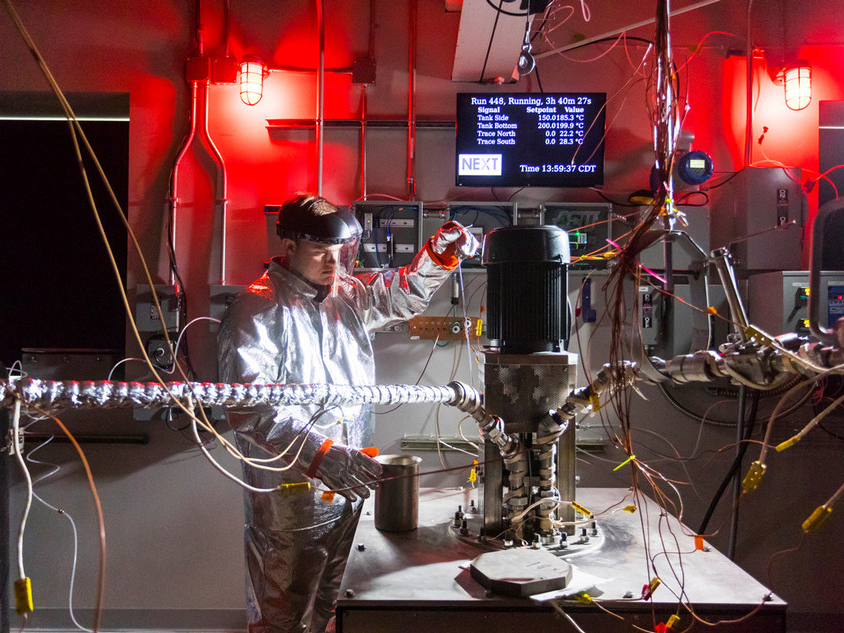The University of Texas at Austin is part of a consortium of four universities designing a new nuclear research reactor to advance research in clean energy.
The consortium of universities is partnering with Natura Resources on a $30.5 million effort to design and license the facility that will be located at and owned by Abilene Christian University. The Nuclear Energy eXperimental Testing Research Alliance launched in spring 2019 and includes UT Austin, Abilene Christian University, Texas A&M University and Georgia Institute of Technology, which all have extensive experience in nuclear engineering and physics.
The NEXT Lab at Abilene Christian University

The reactor will be the first university-based molten salt research reactor. A molten salt reactor is different from a typical nuclear reactor because it uses liquid fuel as opposed to solid fuel. Liquid fuel flows into the reactor core, where the uranium fissions to produce heat. That heat then passes through a heat exchanger for processing and to enable production of electricity. Liquid fuel provides advantages in efficiency and safety, as well as new challenges that the research reactor teams will work to solve.
“Nuclear energy is already our most effective tool against climate change,” said Derek Haas, assistant professor in the Walker Department of Mechanical Engineering and lead of the UT Austin team. “The molten salt research reactor will provide the United States a testbed to develop the next generation of even safer, more efficient nuclear reactors.”
At the facility, the consortium will develop solutions to some of the world's most critical energy needs, including safer, cleaner and less expensive energy; pure and abundant water; and medical isotopes for diagnosing and treating cancer.
The UT Austin team has been awarded $3.5 million over the next three years for their part in the project. UT Austin will lead the design of the reactor bay experimental research facilities and collaborate on the design and safety analysis of the entire system, using reactor modeling tools and high-performance computing. In addition to Haas, the UT team is co-led by William Charlton and Kevin Clarno. They are also recruiting students and hiring several positions to staff the project, including one research fellow, one senior research fellow and a research associate.
The Cockrell School of Engineering’s Nuclear and Radiation Engineering Program, within the Walker Department of Mechanical Engineering, dates back more than 60 years. The Nuclear Engineering Teaching Laboratory’s TRIGA Nuclear Research Reactor, which is housed at UT’s J.J. Pickle Research Campus, is one of only 31 research and test reactors in the United States. UT’s research reactor is among the most active in the U.S., with capabilities in materials analysis, isotope production, radiochemistry and instrumentation development.
Students in the nuclear engineering program study a wide variety of areas, including:
- Radiation effects on materials
- Stewardship of existing nuclear weapons
- Managing existing radioactive waste
- Production methods of radioisotopes
- Neutron activation analysis and prompt gamma activation analysis
- Environmental chemistry
- Nuclear electrical power
- Health physics applications
- Neutron imaging
- Non-proliferation
- Computational nuclear engineering
"We are incredibly pleased and honored to sponsor this remarkable multi-disciplinary collaboration of talented researchers — physicists, engineers, chemists and their students — to support our vision to develop advanced energy systems that are inherently safe, sustainable and environmentally friendly," said Tony Hill, Natura Resources’ director of product development.







